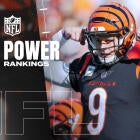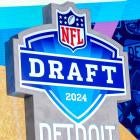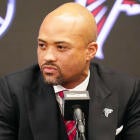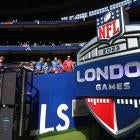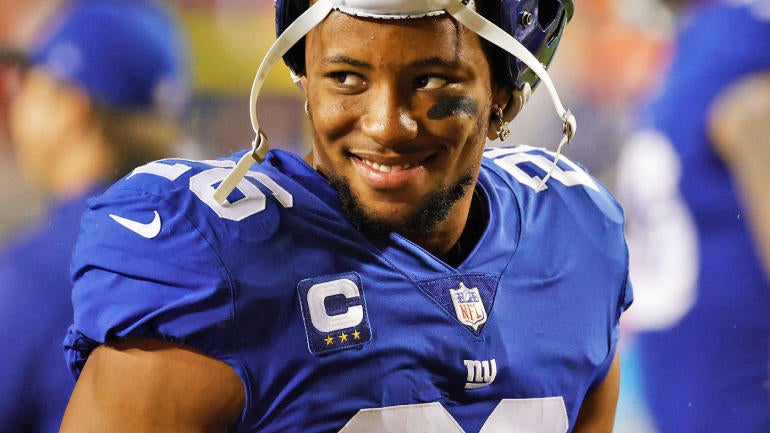
Saquon Barkley left the New York Giants for the Philadelphia Eagles on Monday, agreeing to terms on a lucrative deal that shakes up the NFC East. Perhaps more surprising than the thought of Barkley rocking midnight green, however, is the fact Philly even went through with the move, breaking character to spend top dollar on the increasingly devalued position of running back.
To be clear, the Eagles have paid big bucks to a ball-carrier before, but not since LeSean McCoy etched his name in the franchise record books back in the early 2010s. Under general manager Howie Roseman, they've mostly preferred to lean on bargain-bin backs while allocating legitimate money to their revered offensive line. The strategy helped them win the Super Bowl in 2017 with short-term rentals Jay Ajayi and LeGarrette Blount, and it drove them to let Miles Sanders walk in 2023 free agency after his own Super Bowl appearance. Why spend a fortune, after all, if you can plug and play just about anyone behind a sterling front?
Barkley's reported three-year, $37.75 million deal is another beast entirely. This is real running-back money, making the ex-Giants star the fourth-highest-paid player at his position, due an average of $12.5 million per year. On the surface, the numbers are jarring, especially considering the Eagles allowed 2023 starter D'Andre Swift -- a perfectly explosive weapon for them, when utilized -- to sign with the Chicago Bears for roughly $8 million per year, or 43% less.
Does any running back justify this kind of commitment in the year 2024? The truth is, probably not. Besides playing a position that can be filled easier than others, Barkley has an extensive injury history, enduring sluggish stretches while missing multiple games in four of his last five seasons. It's far from inconceivable that the Eagles will be looking to get out of this deal a year early, if not sooner. But -- and this is a big "but," hence their gamble -- there are a few things working in Philly's favor here.
For one, Barkley has never played for this kind of team in the NFL. The Eagles collapsed late in 2023, but this is still an organization that's made six playoff trips -- and two Super Bowl appearances -- in the last seven years. They have a quarterback in Jalen Hurts who is not only a year removed from a legit MVP bid but remains one of the game's most effective rushers. They have an offensive line with multiple Pro Bowl-caliber starters in Jordan Mailata, Lane Johnson and Landon Dickerson.
Long saddled with shoddy blocking and turnover-riddled quarterback play in New York, Barkley still flashed game-changing electricity, eclipsing 1,600 scrimmage yards in 2022 and approaching 70 first downs in 2023. Now he should finally have a supporting cast to complement his unteachable talents -- a dual-threat dynamism that made him a top-two draft pick years ago.
Secondly, if one team has proven it's okay to invest in the running back position, it's probably the team that all but broke the Eagles in 2023: the San Francisco 49ers. A year after acquiring the expensive and injury-prone but similarly multifaceted Christian McCaffrey, the 49ers found themselves within one score of beating the Kansas City Chiefs in the Super Bowl. McCaffrey was arguably San Francisco's MVP, serving as both a safety valve and home-run threat for Brock Purdy and Co. Could Barkley be the same kind of difference-maker for Hurts and the Eagles? There's a real argument that he is one of a select few of today's backs who have the multipurpose gifts to warrant a McCaffrey-like commitment.
That's easier envisioned than actually lived out. It's why running backs so often get the short end of the stick in today's market. But the Eagles, of all teams, bucked the trend on Monday. You can at least see why they're taking the chance.














